Microbial Gardens is a place where the invisible microscopic becomes visible macropresent. Scientists estimate that microbes outnumber human cells in our bodies by nearly 30%. Microbial Gardens amplifies microbial interactions so you can see just how dynamic the microbial world can be. This project represented my first time presenting art in a major museum like the MoMA, and it was the first time I had ever been to New York to show my art.
Stroll among these living pavilions as they compete with the others for resources. See how some gently provide sustenance for others just as grasses provide nourishment to deer. Then see how others prey upon them to satisfy their needs. The pavilions support microbes on a human scale, and each hosts a different species. Connections provide access to visitors and promote flows of resources between them. I was honored to be part of the Biodesign Challenge, and as someone who loves science and went on to get my masters in science, presenting this work as a BFA student in both an artistic and scientific context was super exciting for me.
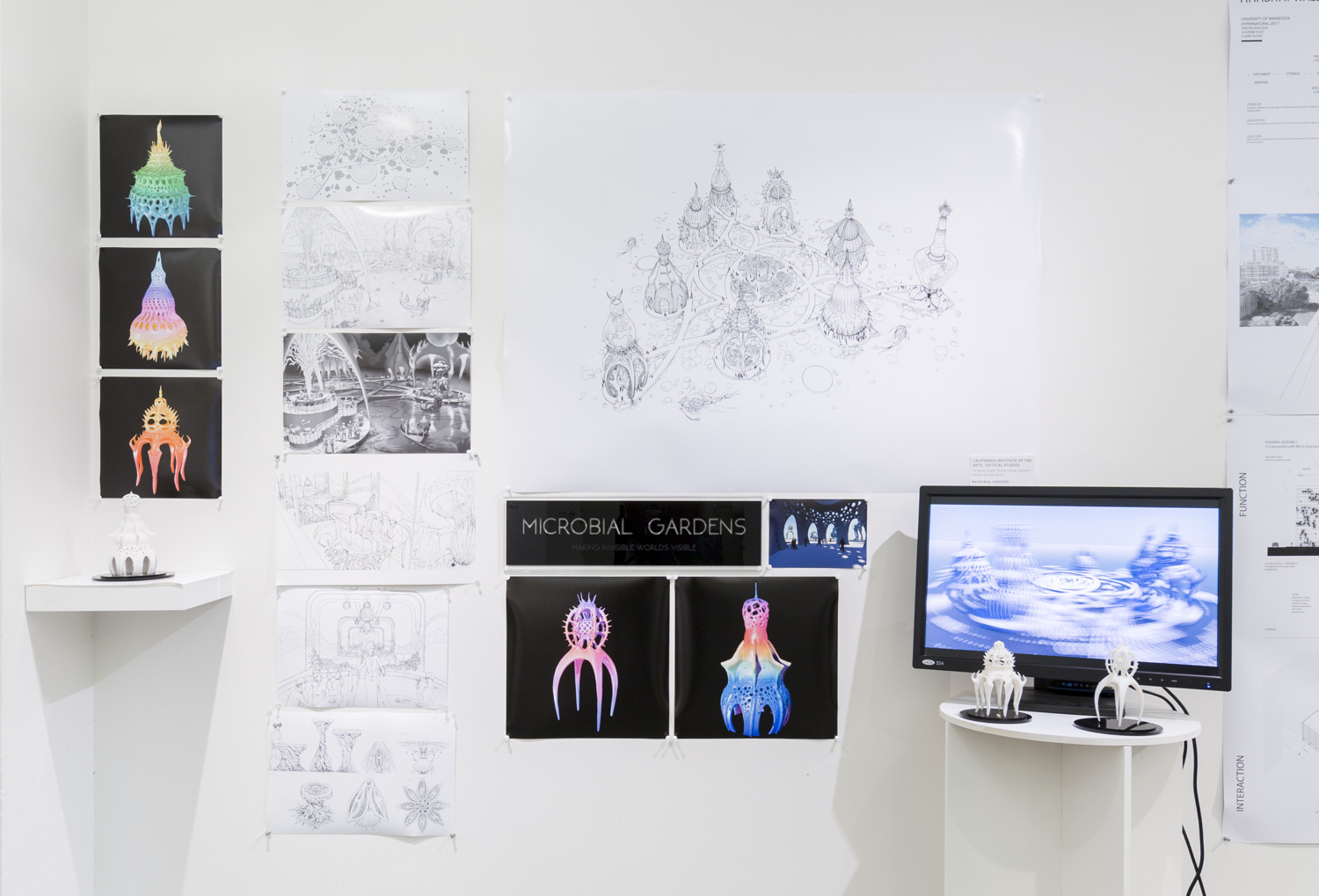
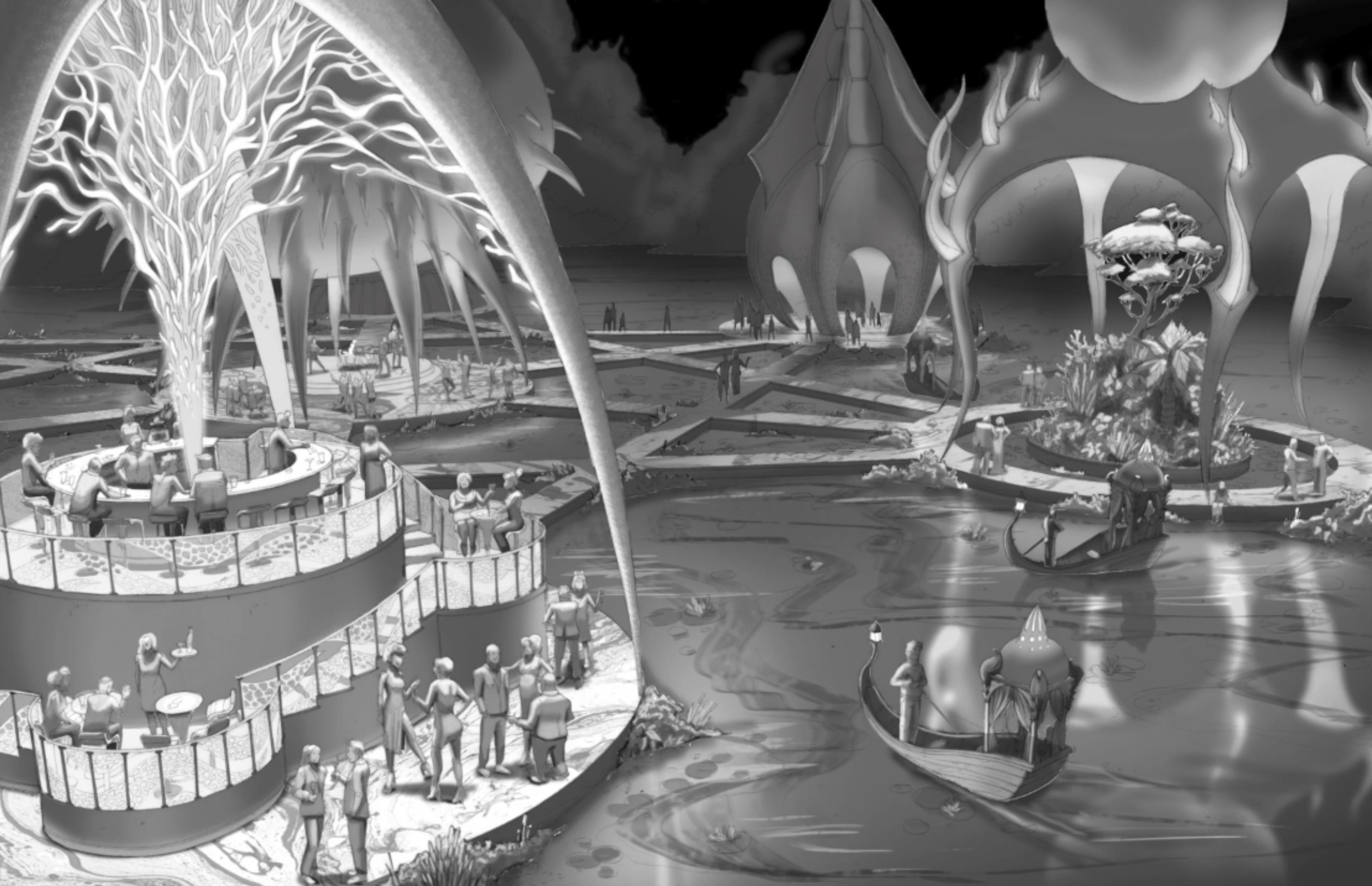

The project was later exhibited at SVA's "The Future Will Be Grown" gallery exhibition in New York City, showcasing innovative biodesign projects from students around the world.
Inspiration: Nobel Prize recipient Joshua Lederberg coined the term microbiome to describe "the ecological community of commensal, symbiotic, and pathogenic microorganisms that literally share our body space." We are attracted to a concept of self that includes otherness; we wished to investigate this other and share our findings.
We wanted to celebrate the macrobiotic ecology: its species interactions, food webs, and communities of cells and microbes and display this drama on a human scale. We were inspired by Epcot Center, the Alnwick Poison Gardens, and biological morphogenesis.
Guests help to shape the Gardens. Energy from footsteps activate LEDs that foster growth. Also, the Gardens may direct traffic by sending luminescent microbes into areas that would benefit from the traffic. This dramatic ecology is here for all to see at Microbial Gardens. You can explore more about the project at microbialgardens.com.

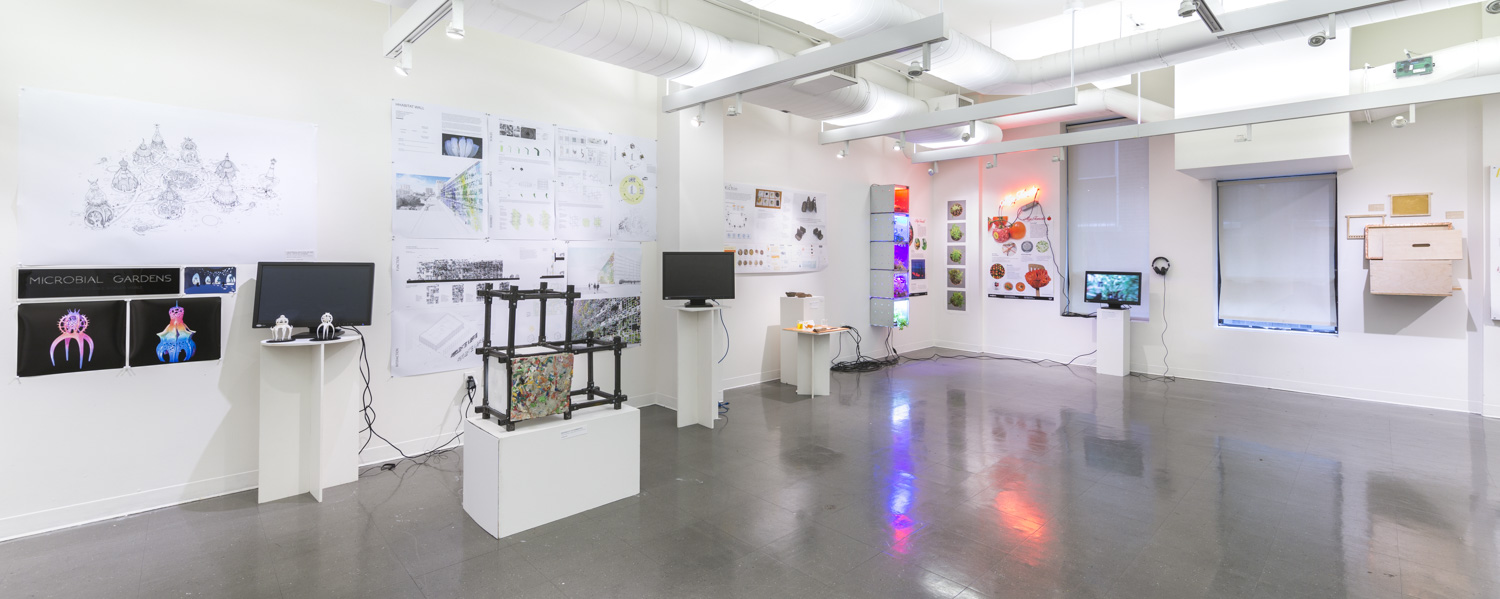
Interactive 3D Radiolarian Models
Explore these microscopic organisms that inspired our architectural forms. Each model represents a different species of radiolarian, showcasing their intricate geometric structures that we translated into our pavilion design.
Considerations: Microbes usually bring thoughts of sickness and disease. Our research showed us that these tiny creatures inhabit a fascinating world. We realized that exposing their interactions could make these invisible creatures as exciting as the animals that roam the African Savannah. We designed a themed venue to explore this dynamic ecology obscured by scale.
The challenge was to present the microscopic world in a way that would be accessible, coherent, and engaging to guests. What kinds of struggles do microbes have? What kinds of hierarchies exist? How do they relate to one another? Could we experience microbial worlds without microscopes?
Design Approach: We decided that the best way to see the "ecological community of commensal, symbiotic and pathogenic microorganisms" described by Dr. Joshua Lederberg would be to foreground the interactions between microscopic species. Our first strategy was to separate the species into six park pavilions and provide pathways of information and resource communication.
We designed an environment that makes the microbial world easy to observe, comprehend, and finally to embrace the communities of microscopic interactions. Microbial Gardens presents aggregates of microbial interactions at human scale. We reduced microscopic interactions to key actors: Diatoms, Radiolaria, Rotifers, and Copepods. We focussed on the food chain: their relations with one another, and how energy flows between them.
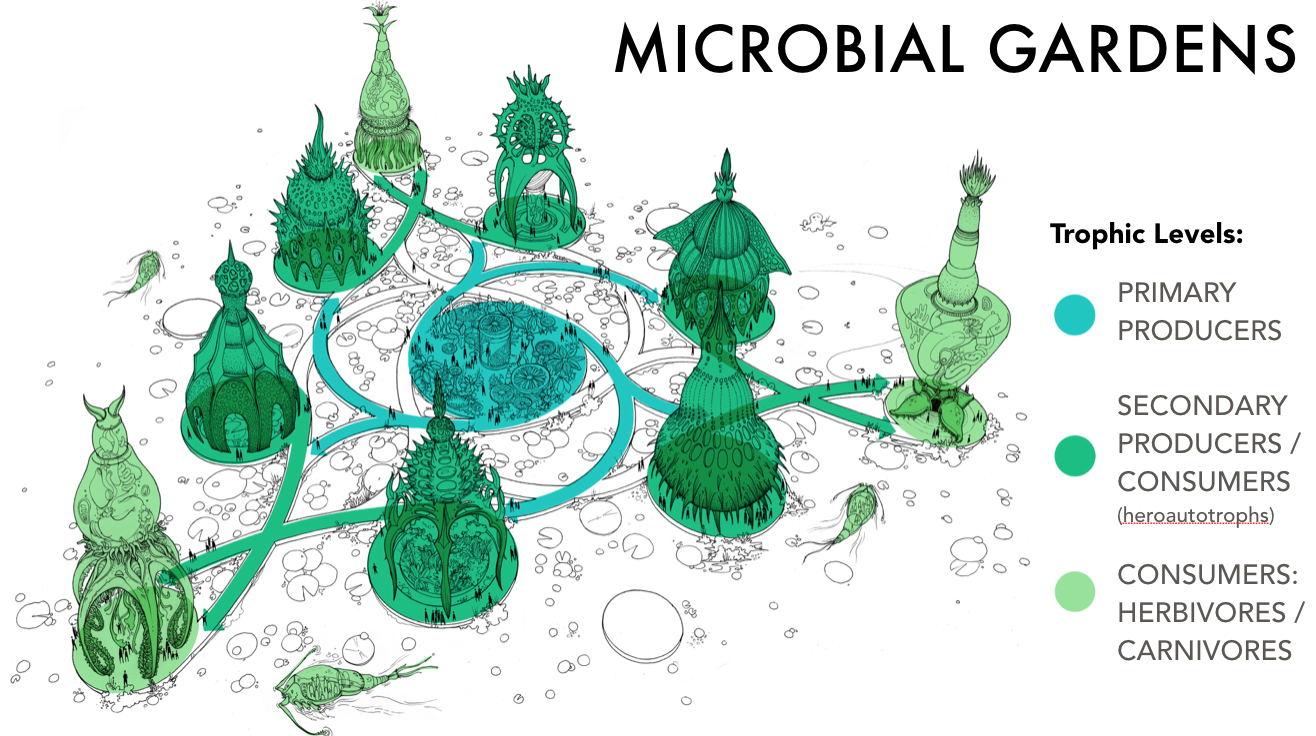
Interactive Experience: The Gardens are organized in a classic base structure with minor attractions that highlight the actors in this ecology. Interactions between the microbes and guests shape the pathways connecting the pavilions. Microbial Gardens is interactive: the park changes from visit to visit. Guests carry resources between pavilions and contribute to ebbs and flows of foods and contaminants.
Carnivorous microbes may hitch rides on guests and prey on other microbes. So guests make visible impacts this microscopic worlds. These authentic interactions are unique to Microbial Gardens, and we feel that seeing these effects will increase engagement and generate sympathy for the tiny creatures and environments all around.
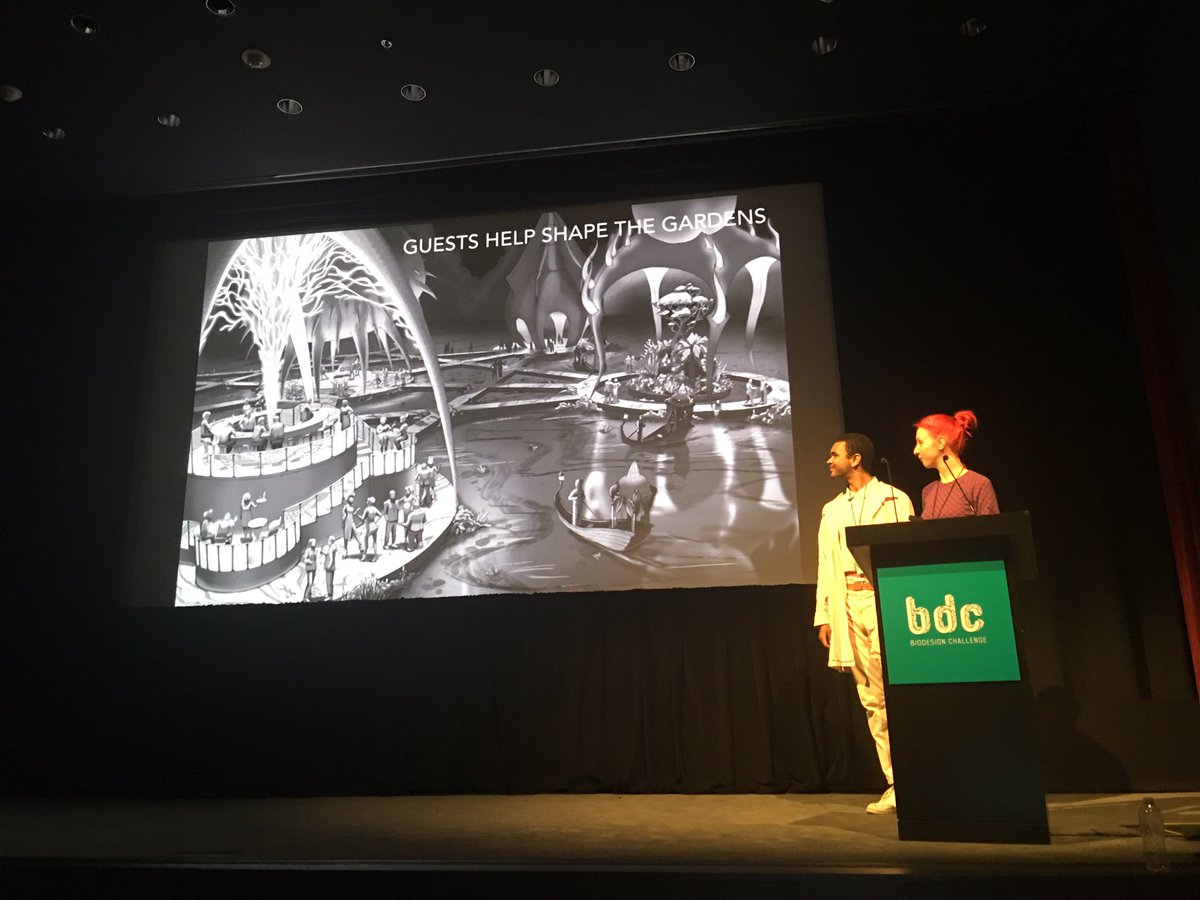
Acknowledgments: We acknowledge previous work by Neri Oxman and the Meditated Matter group at MIT that explores the relationship between biology and engineering. The combination of biology and engineering reveals the perplexing charm of microbes, and we hope that our guests will leave with a new appreciation for the symbiosis between microbes and humans.
Exhibition of student projects from Biodesign Challenge 2017. The show's title plays on Salvador Dali's famous proclamation that the future of architecture "will be soft and hairy." The student projects portray futures where materials, garments, foods, and more will be produced with the tools of biotech through symbiotic relationships with other species.
Project Credits
Biodesign Challenge 2017
